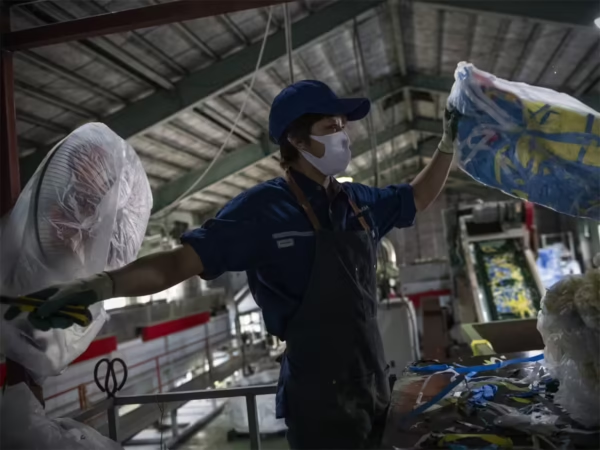Introduction
The participation of women in the workforce has seen a significant rise in India over the years. However, the presence of women in blue-collar jobs remains relatively low due to societal norms, gender biases, and infrastructural challenges. Blue-collar jobs, which primarily involve manual labor, include roles in construction, manufacturing, logistics, and other labor-intensive industries.
Despite the hurdles, many women are breaking barriers and making their mark in these sectors. Government initiatives, corporate inclusivity policies, and evolving societal perspectives are contributing to the increasing involvement of women in traditionally male-dominated fields. This blog explores the challenges faced by women in blue-collar jobs, the progress made, and the road ahead.
The Historical Perspective
Traditionally, blue-collar jobs in India were considered unsuitable for women due to cultural and physical stereotypes. Women were primarily confined to domestic responsibilities or engaged in informal, unorganized labor sectors such as agriculture and home-based handicrafts. The concept of women in construction, manufacturing, or heavy industries was largely unheard of.
However, over time, economic necessity, education, and empowerment movements have pushed more women into these roles. The rise of female construction workers, factory laborers, delivery personnel, and security guards is a testament to this gradual change.

Challenges Faced by Women in Blue-Collar Jobs
Traditionally, blue-collar jobs in India were considered unsuitable for women due to cultural and physical stereotypes. Women were primarily confined to domestic responsibilities or engaged in informal, unorganized labor sectors such as agriculture and home-based handicrafts. The concept of women in construction, manufacturing, or heavy industries was largely unheard of.
However, over time, economic necessity, education, and empowerment movements have pushed more women into these roles. The rise of female construction workers, factory laborers, delivery personnel, and security guards is a testament to this gradual change.
Challenges Faced by Women in Blue-Collar Jobs
Despite progress, women in blue-collar jobs face numerous challenges, which need to be addressed for greater gender inclusivity. Some of the most significant challenges include:
1. Gender Stereotypes and Bias
Many blue-collar industries are male-dominated, and there is a general perception that women lack the physical strength or endurance for these jobs. This bias often leads to fewer hiring opportunities for women.
2. Workplace Harassment and Safety Concerns
Women in blue-collar jobs frequently deal with workplace harassment, unsafe working conditions, and inadequate protective measures. Many workplaces lack proper sanitation facilities, especially for female workers, making it difficult for them to sustain employment.
3. Wage Disparity
The gender pay gap is a major concern in blue-collar jobs. Women often receive lower wages than their male counterparts, despite performing the same tasks. This wage disparity discourages many women from entering or continuing in these jobs.
4. Lack of Skill Development and Training
Many blue-collar jobs require technical skills that are often not accessible to women due to financial constraints or social restrictions. Limited vocational training opportunities prevent women from advancing in these sectors.
5. Work-Life Balance and Social Stigma
Women in blue-collar jobs often struggle to balance their professional and personal lives. The lack of support from families and societal pressure discourages them from taking up or continuing in these roles.

Progress and Initiatives Promoting Women in Blue-Collar Jobs
While challenges persist, various initiatives are helping women overcome these barriers. Several government and corporate programs are focused on increasing women’s participation in blue-collar employment.
1. Government Initiatives
The Indian government has launched multiple programs aimed at empowering women in blue-collar roles.
- Skill India Mission: Provides vocational training for women to equip them with technical skills.
- Pradhan Mantri Kaushal Vikas Yojana (PMKVY): Offers free skill development programs, helping women enter industrial and manufacturing sectors.
- MUDRA Scheme: Facilitates micro-financing for women entrepreneurs, enabling them to start small-scale blue-collar businesses.
2. Corporate Inclusion and CSR Programs
Many companies are recognizing the importance of diversity and are implementing policies to encourage female participation in blue-collar roles.
- Diversity hiring policies: Companies like Amazon, Flipkart, and Zomato have launched programs to recruit more female delivery personnel.
- Safe workplace environments: Businesses are ensuring gender-friendly workplaces by improving sanitation, security, and anti-harassment policies.
- Skill development tie-ups: Many corporations are collaborating with training institutes to provide vocational education to women.
3. NGOs and Social Movements
Numerous non-governmental organizations (NGOs) are working towards empowering women in blue-collar industries. These organizations offer training, legal support, and advocacy for better working conditions. Notable NGOs include SEWA (Self-Employed Women’s Association) and Azad Foundation, which provide skill training for women drivers, mechanics, and factory workers.
Inspiring Success Stories
The rise of women in blue-collar jobs is best illustrated through real-life success stories of women who have broken barriers and inspired others.
1. India’s Women Cab Drivers
Organizations like Azad Foundation have trained women from marginalized backgrounds to become professional drivers. Many of these women, who once had limited opportunities, now earn stable incomes as taxi and cab drivers, challenging gender norms in the transport industry.
2. Women in Construction
Several construction companies in India have begun hiring female masons and site workers. These women, equipped with vocational training, are proving that they can excel in labor-intensive roles traditionally dominated by men.
3. Female Delivery Personnel
E-commerce giants have started hiring female delivery executives, providing them with safe and flexible working environments. Women working as delivery personnel for companies like Amazon and Swiggy are gradually becoming more visible in cities across India.
The Road Ahead: How to Encourage More Women in Blue-Collar Jobs
To further boost female participation in blue-collar jobs, a multi-faceted approach is needed. Here are some key recommendations:
1. Promoting Gender-Inclusive Hiring Practices
Companies should actively focus on gender diversity in blue-collar recruitment by implementing gender-neutral hiring policies.
2. Ensuring Safe Workplaces
Workplace safety should be a top priority, with measures such as:
- Installing CCTV cameras and panic buttons in workspaces.
- Providing women with protective gear and separate sanitation facilities.
- Enforcing strict anti-harassment policies.
3. Expanding Skill Development Programs
More vocational training centers should be established to provide women with technical skills necessary for blue-collar jobs.
4. Addressing Wage Disparities
Equal pay for equal work should be enforced to ensure fair compensation for women in blue-collar roles.
5. Changing Societal Perceptions
Awareness campaigns should be conducted to challenge stereotypes and encourage families to support women pursuing blue-collar careers.
Conclusion
The increasing participation of women in blue-collar jobs marks a significant step towards gender equality and economic empowerment in India. While challenges remain, the efforts of the government, corporate sector, and NGOs are paving the way for a more inclusive workforce.
Breaking stereotypes and fostering a culture of acceptance and respect will enable more women to take up and thrive in blue-collar professions. By addressing systemic barriers and providing equal opportunities, India can create a future where blue-collar jobs are accessible and rewarding for all, regardless of gender.




